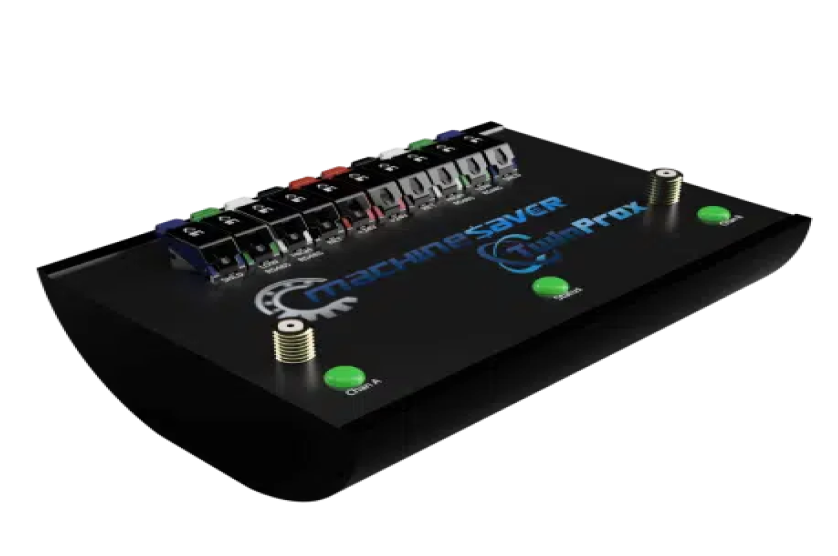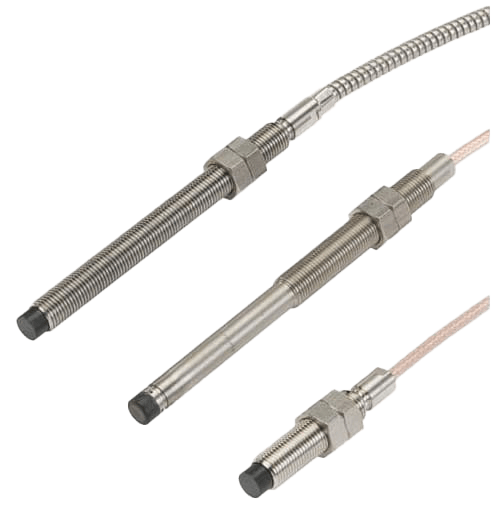Vibration Sensors for Turbines
Industrial turbines are machines that convert the energy in a moving fluid (such as air, steam, or water) into mechanical energy, which is then typically converted into electrical energy. There are several types of industrial turbines, each suited for different applications and energy sources.
Common Types of Industrial Turbines
- Steam Turbines: These are the most widely used type of turbine in power generation. They convert the thermal energy in steam into mechanical energy. Steam turbines are used in coal-fired, natural gas-fired, nuclear, and solar thermal power plants.
- Gas Turbines: These turbines use high-velocity jets of gas to drive a rotor. They are often used in power plants that burn natural gas, as well as in some types of oil and gas industry applications. They're also used in jet engines.
- Wind Turbines: These convert the kinetic energy of wind into mechanical energy, which can be used to generate electricity. Wind turbines come in various sizes, from small residential units to large offshore turbines.
- Water Turbines: These include hydroelectric turbines that are used in dams and other water-based power generation systems. They convert the kinetic and potential energy of moving water into mechanical energy. Types include Francis, Kaplan, and Pelton wheel turbines.
- Combustion Turbines: Similar to gas turbines, these are used in power generation systems where the fuel is burned inside the turbine, producing a high-velocity hot gas that drives the turbine blades.
Benefits of Using a Proximity Vibration Monitoring System
Monitoring industrial turbines with a turbine vibration monitoring system offers numerous benefits, particularly in terms of predictive maintenance, efficiency, safety, and overall operational performance. Let's explore how these benefits apply to each type of turbine:
- Predictive Maintenance: Turbine vibration monitoring can detect imbalances, misalignments, or bearing wear, common issues in steam turbines. Early detection allows for timely maintenance, reducing downtime.
- Efficiency Optimization: Continuous monitoring helps in maintaining optimal turbine performance, ensuring the steam turbine operates at peak efficiency.
- Safety: Early detection of abnormal vibrations can prevent catastrophic failures, enhancing safety for personnel and the facility.
- Detecting Performance Issues: Gas turbines operate at high temperatures and speeds. Vibration analysis can help detect issues like blade fatigue or faults in bearings, which are critical for such high-speed machinery.
- Operational Stability: Ensuring that the turbine runs smoothly without excessive vibration ensures longer life and stable operation.
- Blade and Gearbox Monitoring: Vibration monitoring can detect issues in the gearbox and blades, which are critical for wind turbine operation.
- Optimal Performance in Variable Conditions: Wind turbines face variable wind conditions. Turbine vibration analysis helps in adjusting operations for changing environmental conditions.
- Detecting Hydraulic Imbalances: Water turbines may experience issues like cavitation or hydraulic imbalances. Vibration monitoring can alert to such conditions before they lead to significant damage.
- Longevity and Efficiency: Regular monitoring helps in maintaining the efficiency of the turbine and prolongs its operational life by identifying wear and tear.
- High-Temperature Operation Monitoring: These turbines operate under high temperature and pressure. Monitoring vibrations can indicate thermal distortions or misalignments.
- Fuel Efficiency: Properly maintained turbines are more fuel-efficient, and vibration analysis is a key part of maintenance strategies.
In all these cases, the primary benefits of using a proximity vibration monitoring system include:
- Early Fault Detection: Identifying problems before they lead to failure reduces downtime and maintenance costs.
- Operational Efficiency: Ensuring that the turbines operate within the desired vibration parameters enhances efficiency and output.
- Safety and Reliability: Reducing the risk of unexpected failures enhances the safety of the facility and its personnel.
- Lifecycle Management: Extending the operational life of the turbines by preventing excessive wear and tear.
In summary, proximity vibration monitoring is a crucial tool in the effective and efficient operation of various types of industrial turbines, offering benefits across maintenance, performance, safety, and longevity.
We can customize vibration solutions to fit your needs
Request For QuoteAdvantages of TwinProx Proximity Probe
The TwinProx proximity probe driver seems to offer a range of features that can significantly benefit the monitoring and maintenance of various industrial turbines. Let's explore how its specific features can be advantageous for each turbine type:
- Dual-Channel Probes: The ability to use dual channels for the price of one can enhance the monitoring capabilities while reducing costs.
- Compatibility with Other Systems: The compatibility with systems like 3300XL® and NSV® ensures easy integration into existing setups.
- Shaft Target Material Accommodation: This feature allows for accurate measurements regardless of the material of the steam turbine shaft.
- Time Waveform and Spectral Vibration Data: This is crucial for high-speed gas turbines where precise vibration data can indicate blade or bearing issues.
- MODBUS RTU RS485 Interface: Direct interfacing with control systems allows for real-time monitoring and response, vital for the high-temperature operation of gas turbines.
- Digital Elimination of Electrical and Mechanical Runout: This feature is particularly beneficial for wind turbines, where blade and gearbox vibrations can be complex to analyze.
- Color-Coded Wire Terminals: Simplifies installation in the often challenging locations where wind turbines are situated.
- Peer-to-Peer Communications for Phase-Synchronized Vibration Data: Essential for monitoring the dynamic conditions of water flow impacting the turbine blades and components.
- Built-In Alarm Logic: Helps in the early detection of issues like cavitation or imbalances in water turbines.
- Raw Data Dynamic Output: Provides detailed data crucial for the precise monitoring required in combustion turbines.
- Event-Based Captures from High Alarms: Allows for immediate analysis and response to critical conditions in a combustion turbine.
Across all these applications, the TwinProx system's features like dual-channel probes, compatibility with other systems, digital elimination of runout, peer-to-peer communication for synchronized data, and built-in alarm logic provide a comprehensive solution for vibration monitoring. This can lead to enhanced predictive maintenance capabilities, improved operational efficiency, increased safety, and reduced downtime.
Moreover, the ability to integrate seamlessly with existing control systems (PLC, DCS, PC) and the provision of detailed, phase-synchronized vibration data are crucial for making informed decisions about turbine maintenance and operation. The cost reduction potential (20.61% on average for OEMs) is a significant advantage, especially in large-scale industrial settings where multiple turbines are in operation.
Recommended Products
- TwinProx (sleeve or oil-lubricated bearings)
- Proximity Probes (sleeve or oil-lubricated bearings)
Why choose machine saver?
We are the fastest growing vibration technology company in the world
At Machine Saver, we have established ourselves as an industry leader in vibration monitoring through our relentless pursuit of excellence and innovation.
Contact Us




